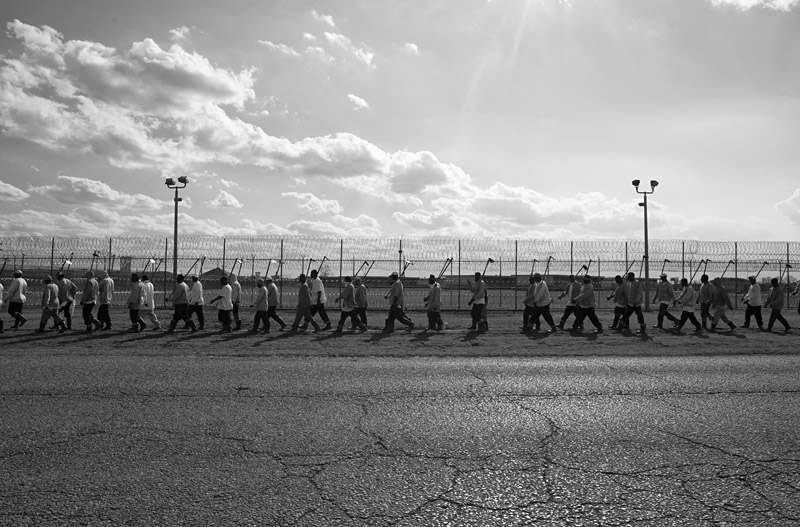Documentary filmmakers have long been drawn to the notorious Louisiana State Penitentiary, a huge complex known as Angola, with its own farm, rodeo, and radio station. Founded in 1869, the place functioned as a slave plantation into the 1930s. You can hear its Delta influence in the music of Lead Belly (a onetime inmate, recorded by John Lomax), and Bruce McDonald’s documentary tries to exhume those blues traditions by following a visiting musician, Rita Chiarelli, as she organizes a concert featuring various inmate bands. The film is shot in black-and-white, like old Walker Evans photographs, and it strikes a similarly sympathetic—not to say ennobling—attitude toward the prisoners. No guards or crime victims are interviewed. Nor do we meet any younger convicts who might prefer Lil Wayne to Howlin’ Wolf; Chiarelli is a blues traditionalist, and she jams with older, more repentant men with graying hair and lined faces. The terms are long and sentences stiff in Louisiana, as one inmate explains: “When they say life, they mean life!” Snippets of Chiarelli’s own life as the daughter of Sicilian immigrants to Canada suggest a different kind of documentary, but this is hardly Johnny Cash at Folsom Prison. Music From the Big House offers great access but little insight into the men of Angola; Chiarelli’s observations (“When you’re singing, you’re not angry”) don’t help matters. The film leaves the inmates’ crimes and sentences to the final credits. Most are there for murder, assault, and rape—not so different, perhaps, than during Lead Belly’s time. (Note: Chiarelli will perform at the Saturday show.)
Music From the Big House: Louisiana Prisoners Make Music








